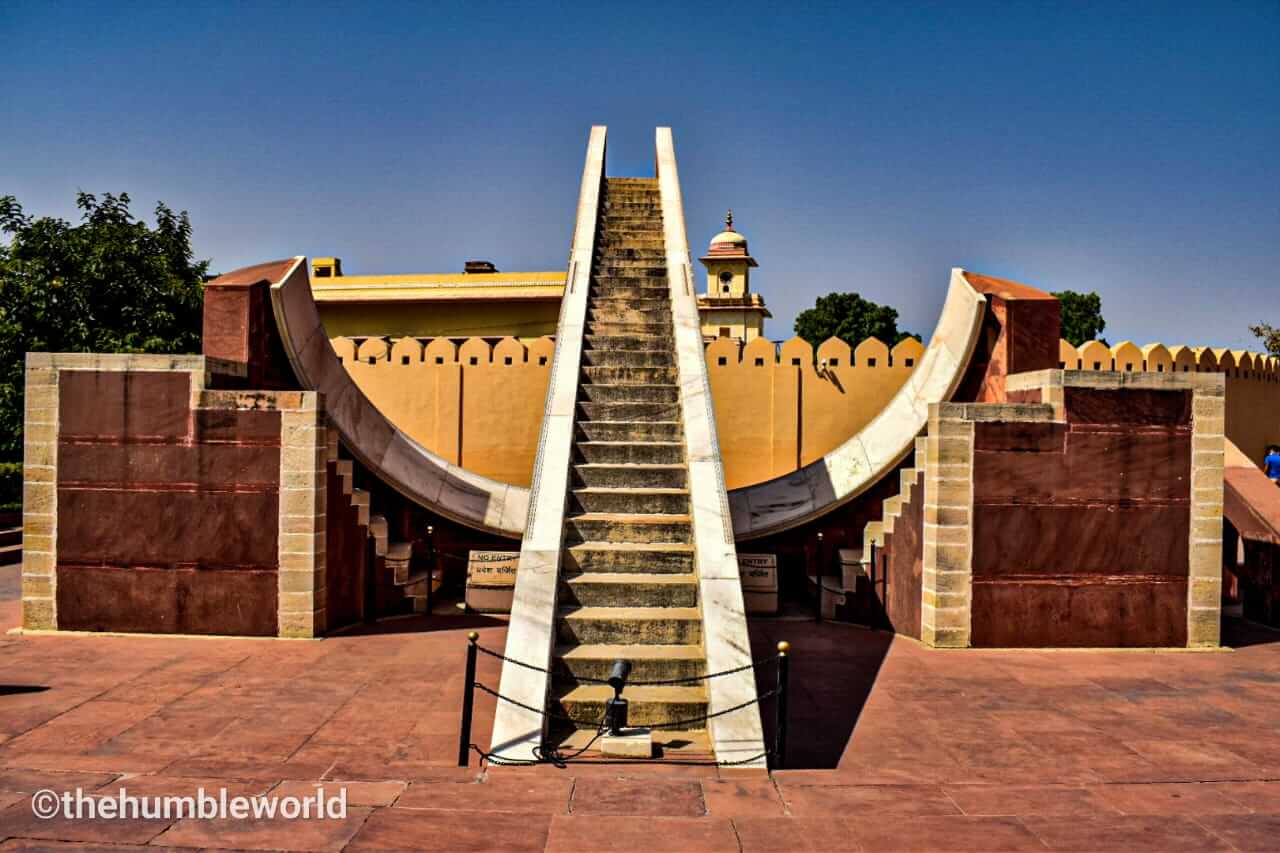Why Visit Jantar Mantar?
Jantar Mantar is a masterpiece of ancient Indian science and engineering. It showcases the brilliance of Indian astronomy centuries before modern telescopes. Whether you are a science enthusiast, history lover, or curious traveler, this place is a must-visit!
Jantar Mantar, Jaipur – A Marvel of Astronomy
Introduction
Jantar Mantar in Jaipur is an astronomical observatory built in 1734 by Maharaja Sawai Jai Singh II, the founder of Jaipur. It is one of the largest and best-preserved observatories in the world and a UNESCO World Heritage Site. The site houses 19 astronomical instruments that were used to measure time, predict eclipses, track celestial bodies, and determine planetary positions with remarkable accuracy.
History & Purpose
- Built between 1724 and 1734 by Sawai Jai Singh II, who was a great scholar of astronomy.
- Inspired by earlier Islamic and Hindu astronomy and based on the teachings of Ptolemy and Indian mathematicians.
- One of five Jantar Mantars built by Jai Singh II (others are in Delhi, Ujjain, Varanasi, and Mathura).
- Designed for astronomical observations without telescopes, using only mathematical calculations and sun movements.
Architectural Features
- Material Used: Stone, marble, and brass.
- Spread Over: 18,700 square meters (5 acres).
- Style: A blend of Rajput, Mughal, and Islamic architecture with large geometric shapes.
- Unique Instruments: Contains 19 fixed astronomical instruments, each serving a different purpose.
Major Instruments at Jantar Mantar, Jaipur
1. Samrat Yantra (The Supreme Instrument)
- The world’s largest stone sundial (27 meters high).
- Measures time accurate to 2 seconds!
- Its shadow moves 1 mm per second.
2. Jai Prakash Yantra
- Used to locate celestial bodies in the sky.
- Divided into two hemispherical structures with engraved zodiac signs.
3. Ram Yantra
- Measures the altitude and azimuth of the sun and stars.
- Consists of cylindrical structures with open circular windows.
4. Narivalaya Yantra
- A horizontal and vertical sundial to track time in different seasons.
5. Chakra Yantra
- Determines the coordinates of celestial objects using circular metal plates.
6. Digamsa Yantra
- Used to measure sunrise and sunset timings.
7. Kranti Yantra
- Measures the longitude and latitude of planets.
8. Rashivalaya Yantra
- Contains 12 instruments, each representing a zodiac sign for astrological calculations.
9. Dakshin Bhitti Yantra
- Measures the altitude, azimuth, and meridian passage of heavenly bodies.
Interesting Facts About Jantar Mantar
✅ World’s Largest Stone Sundial – The Samrat Yantra is the tallest sundial in the world.
✅ Still Functional! – Many instruments at Jantar Mantar are still used by astronomers today.
✅ Accurate Timekeeping – Before modern clocks, Samrat Yantra was one of the most accurate time-measuring devices.
✅ A UNESCO World Heritage Site – Recognized in 2010 for its historical and scientific significance.
✅ Used for Astrology & Horoscopes – Even today, astrologers visit to calculate planetary positions.
Visitor Information
📍 Location: Near City Palace, Jaipur
⏰ Timings: 9:00 AM – 5:00 PM
🎟️ Entry Fee:
- ₹50 (Indian citizens)
- ₹200 (Foreign tourists)
- ₹15 (Students)
🚶♂️ Best Time to Visit: October to March (pleasant weather)
Nearby Attractions
- City Palace (200m away)
- Hawa Mahal (500m away)
- Albert Hall Museum (1.5 km away)
Book Your Jaipur Tour with Aroshi Cab 🚖
Make your Jaipur trip hassle-free with Aroshi Cab’s comfortable taxi services.
📞 Call/WhatsApp: +91 9732802709
